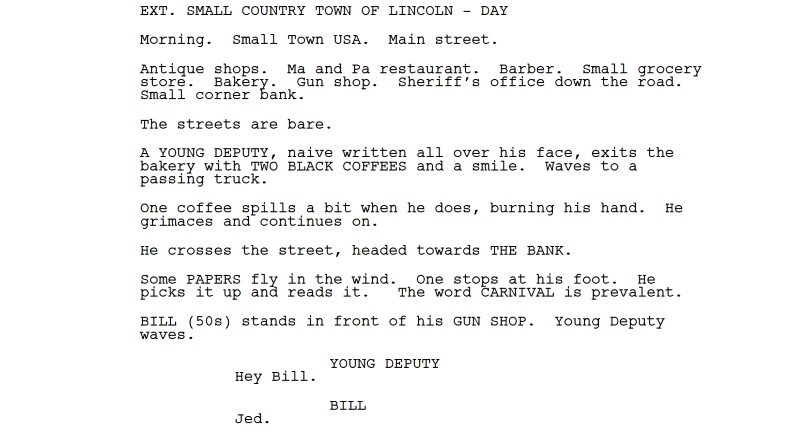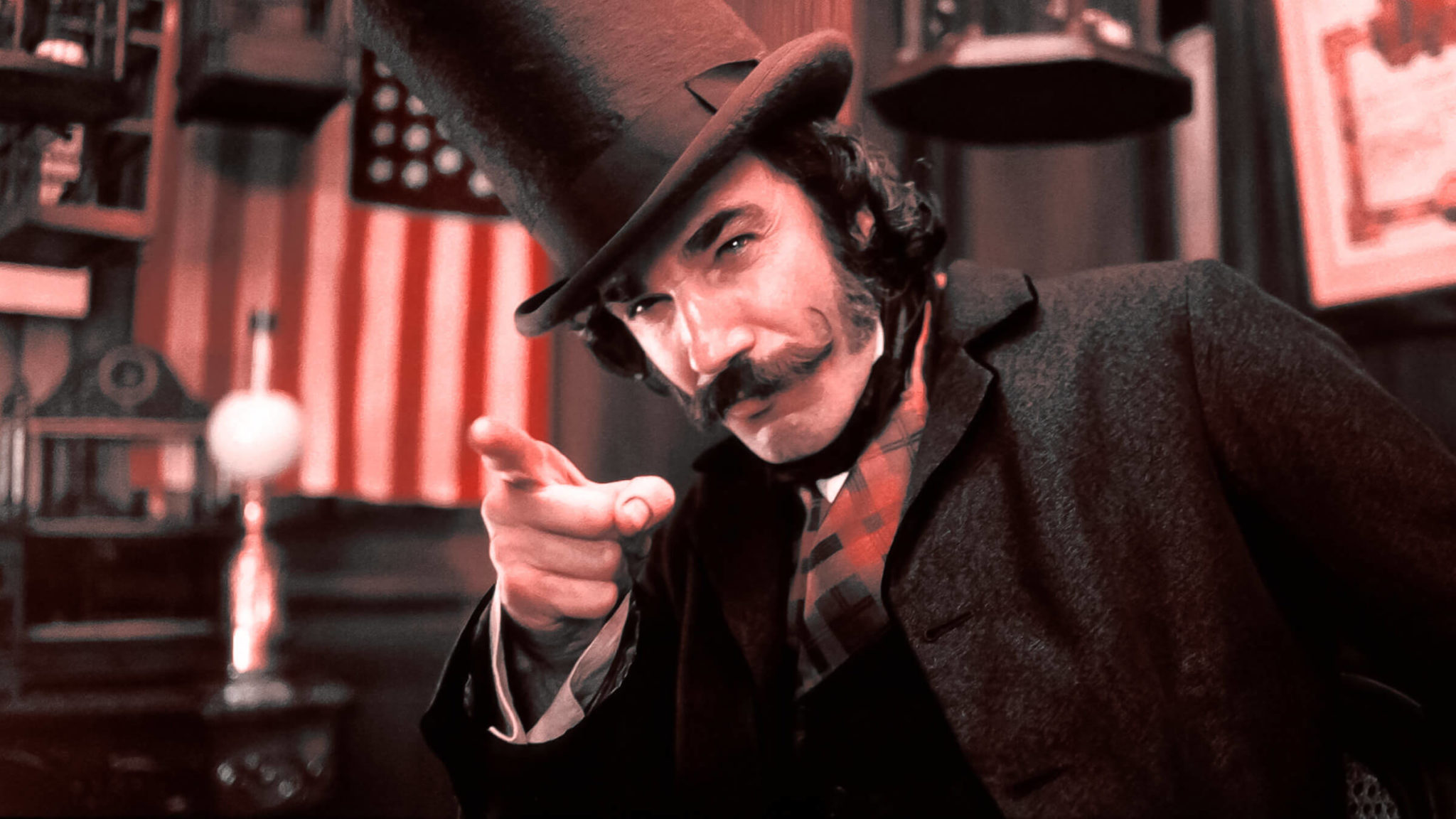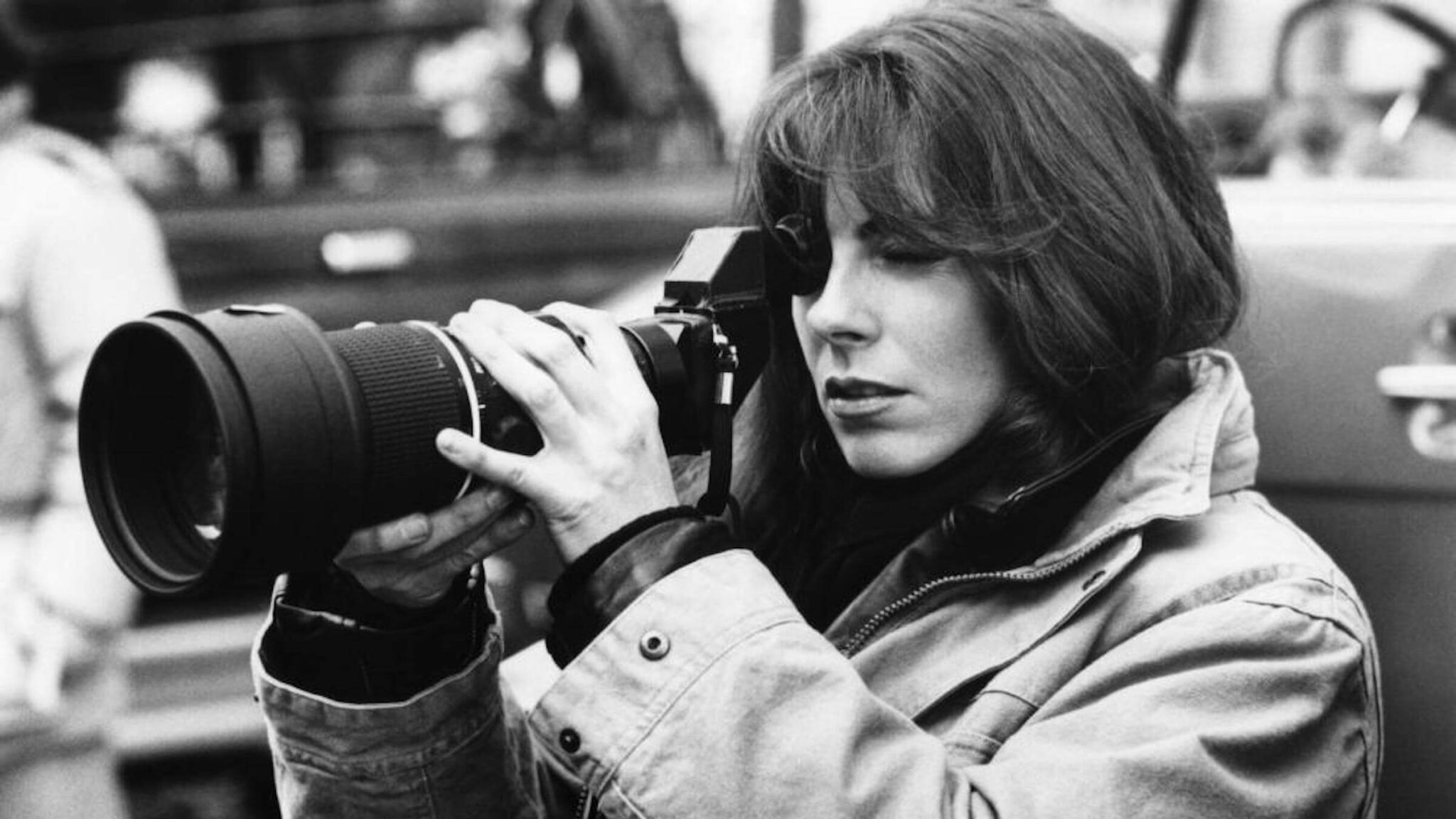365 Days: How to Become a Screenwriter in One Year

Almost everyone in the world believes they have great ideas for a movie or TV series. But ideas are a dime a dozen. It's the implementation of the idea that matters most. And when it comes to Hollywood, that implementation needs to come in the form of a screenplay.
If you're looking to pursue a career in screenwriting and want to realize that dream, you need to have a plan. That's the only way you'll get anywhere. Otherwise, you'll find yourself floating in the air like a feather, hoping you'll catch the right breeze to end up where you want to be in your life and career. If you do that, you're staring down a timeline of a decade and beyond before you're even ready to be in the film or television industry conversation as a screenwriter.
Here we provide the foundation for a year-long screenwriting path that will help you:
- Stay on course
- Offer the structure you need to learn, grow, and hone your screenwriting skills.
- Meet personal deadlines and goals
- Build a stack of ready-to-go screenplays
- Create an effective marketing plan
- Be years ahead of the competition.
Based on proven methods and industry guidelines and expectations, this foundation will help you streamline your growth as a screenwriter and get you multiple steps ahead in the highly-competitive screenplay market for selling your screenplays and getting hired for coveted Film/TV screenwriting assignments (the bread-and-butter of professional screenwriters).
We'll break this down into a month-to-month step guideline that you can merge with your own writing process, likes, dislikes, and schedules. Every screenwriter's journey will be different. But this foundation will help you better your odds of success and save you years of time in the process.
Before You Begin Your Year-Long Screenwriting Path
So before you begin any project, it's good to come into it prepared. You can make adjustments to your preparation along the way, but coming in blind with little to no preparation is going to do nothing but slow you down.
You're about to embark on a year-long screenwriting journey, so that preparation will be key.
Here are three things you'll need to do before you start the year-long plan.
1. Screenwriting Software
You need to format your screenplay according to industry standards. And for this, you need screenwriting software. Plain and simple. There are many types to choose film, including some great free options. While it doesn't really matter what you use, be sure your script is formatted correctly. Software automates the formatting process, assuring it's conforming to Hollywood Standards. Arc Studio is leading the industry in innovative, collaborative screenwriting software - and they have a great free version. One thing we love about Arc Studio is how beautiful and intuitive the user interface is. And you can use it online or offline, in browser or via dedicated desktop or mobile app.
Another good option is WriterDuet. And of course there's Final Draft software, which is currently industry standard. Yes, it's expensive to start ($199). Some ideas to afford professional software:
- Use a free version of Arc Studio Pro
- Save birthday or holiday money
- Ask for it as a gift
- Seek out student or educational discounts for Final Draft
- Don't eat out just a few times out of the year to cover the cost.
If you want to be a professional screenwriter, start with the industry-standard software for ease of file sharing and collaboration.
2. Know the Basic Screenwriting Format
Newcomers obsess a little too much about screenwriting format. Contemporary screenwriting format is fairly simple.
You have your scene heading, which first consists of communicating whether the scene is interior or exterior. That is accompanied by the location that the scene is taking place in, followed by the designation of whether the scene is to be envisioned (and later filmed) in daylight or darkness (DAY or NIGHT).
Those are the only three elements needed within the scene heading. There should be no time or dates accompanying those elements. Time and dates (if necessary) are communicated within the scene description below the scene heading — preferably within the first sentence. And the reason for this goes beyond the reader as well. When a line producer breaks down the script to create a shot and location list, the reports they run through the software need to be simple and straightforward. When a scene heading has dates, times, or other elements beyond the basic three, it’s more work for them to decipher.
Following the scene heading, we have scene description (there always has to be at least one line of scene description after the scene heading). Others refer to this as action. This is the present tense description of what is physically and visually happening in the scene. It’s not overly detailed. It’s not showcasing camera angles and camera directions (with perhaps a few exceptions). Each line represents an image that you, the screenwriter, are throwing at the reader:
This is what I want you to see. Now this.
Then you see this. Now this happens.
When dialogue is present within a scene, scene description is followed by featuring the CHARACTER NAME of the character speaking any dialogue, followed by, well, dialogue.
That’s all you need to write a script for the most part. Simple, isn’t it? If you look at this sample, it includes pretty much all that you need to tell your cinematic story.

Click on the below links to learn some more format nuances:
- Elements of Screenplay Formatting
- Everything Screenwriters Need to Know About Transitions
- The Screenwriter’s Simple Guide to Formatting Television Scripts
- Screenwriting Basics: The Nuances of the Title Page
- Screenwriting Basics: The Keys to Writing Correct Scene Headings
- Screenwriting Basics: Everything You Need to Know About CAPS
- Screenwriting Basics: How to Write an Effective Montage
- Screenwriting Basics: How to Write Cinematic Phone Conversations
- Screenwriting Basics: How to Write Cinematic Fight Scenes
The great thing about screenwriting software is that it does most of the formatting with a single push of a button as you write.
3. Wisely-Chosen Screenplay Concepts
You need concepts to develop into screenplays, right?
The first mistake most novice screenwriters make is not choosing their screenplay concepts wisely. They pick the first idea that comes to mind and jump into the screenwriting process. That's their first mistake.
Your goal for this year-long plan should be to catapult you years ahead of the competitive competition. And, make no mistake, that competition has a lot of great concepts that catch industry insiders' eyes and full attention. So every single concept that you decide to turn into a screenplay should be chosen wisely.
For this year-long journey, we want you to choose four concepts in multiple genres. Why?
- One script isn't enough. You're going to be writing four scripts in one year. The first question industry insiders ask during an initial meet-and-greet meeting is, "What else do you have?" It doesn't matter how good that first script is. You need to showcase a body of work that proves you can execute.
- Writing in at least two different genres adds value to you as a screenwriter. It's wonderful to have a strength in a particular niche but since most successful original Hollywood films or TV series are hybrids of one or more genres (to bring in a larger audience base), having experience in multiple genres is vital to your success as a screenwriter.
So, before you start your year-long screenwriting journey, take a couple of weeks to sit down with a notepad or on your laptop/device and jot down loglines for multiple projects.
Click on the below links to learn more about loglines:
- The Simple Guide to Writing a Logline
- How to Craft the Perfect TV Series Logline
- 101 Best Movie Loglines Screenwriters Can Learn From
Before we offer you details on what type of concepts to consider. Let's quickly touch on what concepts you should NOT be considering. There's a difference between wanting to be a successful screenwriter and producing and directing indie films. Indie films give you the freedom to tell whatever story you'd like.
Read ScreenCraft's Choosing the Right Screenwriting Path for You!
But when you're trying to break into the Hollywood system as a working screenwriter, you need to develop and write spec scripts that showcase appeal for the buyer.
What concepts you should NOT develop:
- Small character pieces
- Small quirky comedies
- Small personal dramas
- Art films that require experimental filmmaking techniques and philosophies
It's not about you having to write big action and fantasy spectacles (those can also be a hindrance due to the high-budget concerns). It's about finding concepts that will fit the mold of what Hollywood is looking for in a spec script or series.
What concepts you SHOULD develop:
- Contained thrillers
- Mid-budget high concept science fiction (i.e., nothing that's going to cost $200 million to produce)
- High-concept comedies (think Liar Liar or The Hangover)
- Action-Adventure
- Horror
- Four-Quadrant movies
- Projects based on Intellectual Properties (books, articles, public domain, etc.)
- True Story crime, military, or historical concepts.
- For TV series, find a compelling character (flawed) matched with an intriguing world.
Those are the top-eight types of feature concepts that attract the most attention — along with a ninth option that showcases what Hollywood looks for most in TV pilot specs. And if you can create a hybrid of a couple of those types of projects, your odds grow even more.
Read ScreenCraft's The Power of Genre-Blending Screenplays!
So take the time and find four concepts that you want to write. Pick ones that you want to see in the theaters or on television. You don't want to chase trends or just service what you think Hollywood wants. But you do have to understand that you need to find projects that Hollywood is going to WANT to make. And that means looking at what has been successful in the past and taking those types of projects in another direction as you meld your wants on needs to them. That's how you'll keep the passion for those projects.
Lastly, you can develop both TV series projects and features, depending upon what platforms you see yourself working on.
Read ScreenCraft's The Different Lifestyles of Feature Screenwriters and Television Writers!
Okay, so you've got your software, you've studied up on the format, and you've got four concepts you're ready to write. Here we go!
PHASE #1 The Writing Phase
Before you even think of sending your script to anyone, you need to hone your writing. And to do that, well, you need to write. During this phase, you're going to train yourself how to write like a pro. Professional screenwriters need to be able to write fast and well. Most screenwriting contracts give screenwriters just a few weeks to finish a draft — with an additional couple of weeks for rewrites.
So with that in mind, we'll be showing you an easy process that you can follow to learn how to write lightning-fast. But let's get to our first month of your year-long journey before you start typing.
MONTH 1 — Feed the Seed
The concept is the seed. And for any seed to grow, you need to feed and water it. When you've chosen the four concepts you're going to be writing this year (give yourself freedom knowing that those concepts can change and evolve), pick the one you're most excited about. It's good to go in with something that has you pumped and ready to go.
Follow these directives on what to do next:
- Find movies and TV shows similar to tone, subject, character, atmosphere, genre, etc. Watch them. You're not looking to steal ideas. You're looking for inspiration that can be applied to the seed that is your concept.
- Create a playlist of instrumental music to use as your temp soundtrack. Music helps get you into the cinematic mood. Don't choose lyrical songs. We're talking movie or television scores.
- Within your imagination, create the perfect movie trailer for your concept. See the major beats of the story from beginning, middle, to end. Use your temp-soundtrack to drive the cinematic moments.
- Go on walks, bike rides, and drives as you listen to your temp soundtrack and build on those trailer moments. Visualize opening scenes, exciting or dramatic sequences, twists and turns, etc. You're actually writing your script in your head as you do this. Writing isn't just about typing. Most screenwriters see upwards of 75% of their script in their head before they type a single word.
- Do the research you need to do. Explore the world of your story. Explore the background of character types, technology, history, or whatever your script needs.
This is what feeding the seed is all about. Sitting in front of a blank screen with a cursor blinking at you, with nothing prepared and pre-visualized, is NOT the way to write. You need to go in with scenes and moments that you've played over in your head time and time again.
Some people need to write these down in outline form. Others don't. Whatever your process is to prepare for the actual typing of your script, go for it.
Take a month to do this. As you go on through this year-long journey, your "feed the seed" process can be streamlined.
By the end of this first month, you should be ready to burst with scenes, cinematic moments, dialogue, etc.
Month 2 — Train to Write Like a Pro
It's time to write this thing!
The days of taking six months to a year or more to write a screenplay are gone. If you want to succeed in this business, you need to be ready, willing, and able to write like a pro.
The magic number of pages to shoot for with a feature script is 100. That's the sweet spot. If you go under by five pages, great. If you go over by five pages, you're still in the clear. Hollywood readers LOVE to see tight scripts that are just 95-105 pages. 115 would be the limit for most spec scripts (exceptions will always be there).
So you're going to teach yourself how to write fast — and well — during this second month. It's going to take you just 10 writing sessions to finish that first draft! And that first draft is going to be more like a solid second draft.
Note: Writing sessions don't have to be consecutive. You can spread them out throughout the month. However, in between each, you need to be visualizing the scenes you're going to be writing for the next session. Use your music playlists as you do. Continue to feed the seed as detailed above.
Here's a bullet point process of what you are going to do for a feature script:
- Session #1 — Sit down and write the first 10 pages of your screenplay. This usually means showing your character in their ordinary world. By page 10, they should face the concept's conflict, which often gives them a call to adventure. If you can do that by page 10, great. If you're a little past that, no worries. When you get to page 10, STOP.
- Session #2 — Read pages 1-10. Tweak as necessary. Then write pages 11-20. When you get to page 20, STOP. You always want to leave yourself aching to write more. It will keep you invested.
- Session #3 — Read pages 1-20. Tweak as necessary. This process helps you stay consistent with tone, atmosphere, pacing, characterization, plot, etc. Then write pages 21-30. When you get to page 30, STOP.
- Session #4 — Read pages 1-30. Tweak as necessary. Be sure that you continue to do the visualization work between each session. Then write pages 31-40.
- Session #5 — Read pages 1-40. Tweak as necessary. It may seem daunting to read here, but re-reading these pages is pretty easy. And since you're tweaking them as you go, you can skim through them pretty fast. Then write pages 41-50.
- Session #6 — Read pages 1-50. Look at that! You're halfway done. Write pages 51-60.
- Session #7 — Read pages 1-60. You're closing out the second act of your script. Write pages 61-70.
- Session #8 — Read pages 1-70. You should know those opening pages so well now that you can get through them easily. Write pages 71-80.
- Session #9 — Read pages 1-80. You should now be starting to resolve your story as you build to the climax. Write pages 81-90.
- Session #10 — Read pages 1-90. You're in the home stretch! Now it's time to bring the story to a dramatic and emotional close, no matter what genre you're writing in. Write pages 91-100.
Congrats! You've written your first screenplay for this year-long journey in just a month. And if you haven't noticed, you've been rewriting as you go. A cool trick that most professional writers master.
Please read The Screenwriter’s Simple Guide to Formatting Television Scripts to adjust your writing sessions to the needs of the page counts for whatever type of series you are writing. If you're writing 20-some page sitcoms, try to do three of them!
Now it's time to put SCRIPT #1 away. Take a vacation from it. You're going to come back to it. Don't worry. It's vital to the rewriting process to allow yourself to decompress a bit. It's been a busy month.
Use the extra time you have this month to start to "feed the seed" for your next script.
Month 3 — Rewrite SCRIPT #1 and Feed the Seed for SCRIPT #2
Your third month is a time of transition. Take the first couple of weeks to take a vacation from SCRIPT #1 and start "feeding the seed" for SCRIPT #2. This will be a welcome break for you. It will allow you to reset your creative mind.
Go through the feed the seed steps from the first month.
After two weeks, go back to SCRIPT #1 and read it cover-to-cover without revising or rewriting. Read it as a script reader would. See the movie (hopefully) unfold in your mind's eye. After the break, you WILL see the glaring issues. You will also see the many strengths.
Take the rest of month three to do two things:
- Rewrite your script as necessary.
- Feed the seed for the next script.
Month 4 — Rinse and Repeat & Test the Waters
Rinse and Repeat
Now you're going to take that 10 session process and apply it to SCRIPT #2. Same process. Rinse and repeat.
But you're going to also be doing some work on SCRIPT #1 in between writing sessions. Hey, if you want to be a pro, you're going to need to learn how to multi-task, right?
Test the Waters
So with SCRIPT #1, it's time to get some feedback on it. Feedback is vital. But you need to choose who you give it to very wisely. If you have any close contacts in the film or television industry, see if they can read the script and offer feedback. If they are in development, ask them if they can run it through their readers.
If you don't have any contacts within the industry, it's strongly recommended that you give it to a professional reader for feedback. Professional feedback is all about having an industry pro give you industry-type reactions. It's ten times better than having a writing peer read it. Yes, it requires a small investment, but it will be worth it.
Who should you get to read it? You want to make sure you go with a company or organization that employs readers with a lot of industry experience.
Another side-option to test the waters is submitting the script to major contests, competitions, and fellowships that have two things:
- Connections to major industry players
- Options to purchase cheaper script coverage
ScreenCraft's Genre Contests, Nicholl Fellowship, Tracking Board's LaunchPad, and Final Draft's Big Break competitions and fellowships are the best in those respects.
You'll need to check the deadlines and timelines for them, but you can at least start planning ahead if the dates don't fall within your fourth-month schedule.
You're Done with Script #2!
Okay, you're never REALLY done with a script until it's on the big or small screen. But now it's time to put it away for a couple of weeks. Take a vacation from it. Enjoy your time away from it. Don't think about it, talk about it, or show it to anyone.
Read ScreenCraft's 2021 ScreenCraft Screenwriting Competition Calendar!
Month 5 — Rewrite SCRIPT #2 and Feed the Seed for SCRIPT #3
You're sensing a pattern here, right? That's what makes this foundation so amazing. It gives you the structure you need to fall in line, train yourself to write like a pro, and build that stack of screenplays for Phase #2 of your journey. But we're not done writing yet.
During this month, you've hopefully received some professional feedback on SCRIPT #1. Use that knowledge to tweak that script, and then take that knowledge and apply it to the SCRIPT #2 rewrite as well.
You're honing your skills here. And what you learn from SCRIPT #1, SCRIPT #2, and the original feedback that you've received for the first will have you years ahead of the rest.
Start feeding the seed for SCRIPT #3 — you've got all of Month Five to do so.
And for now, it's time to put SCRIPT #1 on the shelf. Don't worry. You can still test the waters through the contests, competitions, and fellowships we mentioned above. Most contests are spread out throughout the year, so it works. You'll come back to that first script later on. Again, this phase is all about honing your screenwriting skills, teaching you how to write like a pro, and building that stack of screenplays.
Recap of what you are doing in Month Five before we move on:
- You're putting SCRIPT #1 away for a while, beyond any contest, fellowship, and competitions that may come up.
- You're rewriting SCRIPT #2 after taking a couple of weeks away from it.
- You're feeding the seed for SCRIPT #3.
Month 6 — SCRIPT #3 Time
You're halfway through the year, and you're about to write and finish your third script. Congratulations.
Hunker down and start the 10 writing session process for SCRIPT #3. Here's a recap:
Here's a bullet point process of what you are going to do for a feature script:
- Session #1 — Sit down and write the first 10 pages of your screenplay. This usually means showing your character in their ordinary world. By page 10, they should face the concept's conflict, which often gives them a call to adventure. If you can do that by page 10, great. If you're a little past that, no worries. When you get to page 10, STOP.
- Session #2 — Read pages 1-10. Tweak as necessary. Then write pages 11-20. When you get to page 20, STOP. You always want to leave yourself aching to write more. It will keep you invested.
- Session #3 — Read pages 1-20. Tweak as necessary. This process helps you stay consistent with tone, atmosphere, pacing, characterization, plot, etc. Then write pages 21-30. When you get to page 30, STOP.
- Session #4 — Read pages 1-30. Tweak as necessary. Be sure that you continue to do the visualization work between each session. Then write pages 31-40.
- Session #5 — Read pages 1-40. Tweak as necessary. It may seem daunting to read here, but re-reading these pages is pretty easy. And since you're tweaking them as you go, you can skim through them pretty fast. Then write pages 41-50.
- Session #6 — Read pages 1-50. Look at that! You're halfway done. Write pages 51-60.
- Session #7 — Read pages 1-60. You're closing out the second act of your script. Write pages 61-70.
- Session #8 — Read pages 1-70. You should know those opening pages so well now that you can get through them easily. Write pages 71-80.
- Session #9 — Read pages 1-80. You should now be starting to resolve your story as you build to the climax. Write pages 81-90.
- Session #10 — Read pages 1-90. You're in the home stretch! Now it's time to bring the story to a dramatic and emotional close, no matter what genre you're writing in. Write pages 91-100.
Reminder: Writing sessions don't have to be consecutive. You can spread them out throughout the month. However, in between each, you need to be visualizing the scenes you're going to be writing for the next session. Use your music playlists as you do. Continue to feed the seed as detailed above.
Once you've gotten to the end, put that screenplay away for a couple of weeks as we move into the latter part of Phase 1 of your year-long screenwriting journey!
MONTH 7 — You're Almost to Script #4
And that's the goal for Phase 1 — building that initial stack of scripts.
- Bring out SCRIPT #3 after that two-week break, and read it cover-to-cover. Revise as necessary throughout the month.
- Feed the Seed for SCRIPT #4 as you do.
If you want to purchase professional feedback for SCRIPT #2 or SCRIPT #3, go for it. The main thing is to not overly rely on script coverage and feedback. Is it important? Yes. Should it be a crutch that you need to fall back on for each script and each draft? No.
When you're on assignment, the only person you have to rely on is yourself. You need to hone your skills and be the screenwriter that doesn't overly rely on script notes. Industry insiders want to work with screenwriters confident in their abilities (with no ego) and reliable to get the job done.
MONTH 8 — Complete Your Screenplay Stack!
By now, you're a pro, at least at the 10 writing session process. You know what you need to do for SCRIPT #4. Go do it. You're confident. You're on a roll. And you need just this one last script to transition to Phase 2 of your year-long screenwriting journey.
- Continue to test the waters with your scripts by entering them into contests, competitions, and fellowships.
- Gauge your success with those script submissions.
- Learn from your mistakes AND from your successes.
Screenwriting contests, competitions, and fellowships take time. Once you submit, you won't hear results for a few months. Be patient. Don't put all of your eggs in any single basket. If you make the quarterfinals, that's an accomplishment. If you go beyond that stage, that's even better.
With each script's failure and success, you'll learn new things. And those new things will make you a better writer as you transition into Phase 2.
By the end of Month Eight, you will now have four completed screenplays, with just a couple more weeks to finish the last.
MONTH 9 — Wrapping Things Up
It's time to complete The Writing Phase. Take a break from writing for the first two weeks, and then dive back into the rewrite of your fourth script. No more feeding the seed for any future project.
Before you move onto Phase Two, do the leg work of doing polish rewrites for your scripts.
Revising
Revising is a process that is ongoing as you write your script. It’s not a simple one-stop activity where you go from cover to cover of your screenplay in one sitting and fix certain elements. And it has nothing to do with spelling, grammar, or punctuation.
Depending upon your own writing process, habits, and tendencies, revision is an organic undertaking that can be a day-to-day or a draft-to-draft task — often both.
It’s different from editing or proofreading (see below) because the choices that are being made and the things that you are trying to figure out affect the big picture of your feature film or television series pilot script — the structure, the story, and the characters.
You can accomplish this through the “rewrite as you go” process where you've been reading back previous pages written during your last writing sessions, revising them to ensure that they connect seamlessly with the writing session pages before that, and then writing on under the same style, tone, pacing, and atmosphere.
It’s important to know what revisions entail. You don’t want to be caught in the details of editing and proofreading because you will lose your focus on what the revision is really about — the structure, story arcs, and character arcs. You can also include pacing, theme, tone, atmosphere, and catharsis to that equation as well.
To understand revising you can use the ARMS acronym to ensure that you are staying on that revision course throughout your writing process.
Add — Adding sentences and words to your scene description and dialogue to tell your story better.
Remove — Removing sentences and words from your scene description and dialogue to better embrace the “less is more” mantra of screenwriting.
Move — Moving sentences and words from your scene description and dialogue to create better pacing, structure, and flow.
Substitute — Substituting words and sentences for new ones to create better syntax, articulation, and style.
Editing
Once you’ve managed to revise your screenplay through writing sessions and multiple drafts, it’s time to polish that script by eliminating those inescapable and annoying spelling, grammar, and punctuation mistakes that still linger within your pages.
You accomplish this through proofreading your story with your eyes specifically scanning for those types of errors. During this process, you need to avoid having revision in mind because you will surely miss multiple technical mistakes if your mind keeps wandering to the revising of structure, story, and character.
To stay in the proper frame of mind, remember to use the CUPS acronym to keep you focused.
Capitalize — Capitalizing names, places, titles, months, and other elements. Example: If you’re writing a military script, lieutenant should be Lieutenant (titles).
Usage — Making sure that the usage of nouns and verbs is correct. Example: “Have you packed your luggages?” is incorrect. The correct version would be “Have you packed your luggage?” While this example may seem extreme and silly, you’d be surprised how many mistakes like this are found in submitted screenplays.
Punctuation — Making sure punctuation is correct by checking periods, quotes, commas, semicolons, apostrophes, etc.
Spelling — Spellchecking all words and looking for homophone mistakes. Homophone Examples: Your and You’re. New and Knew. To and Too. There, Their, and They’re. Its and It’s. Then and Than. Effect and Affect. Cache and Cachet. Break and Brake. Principle and Principal. Breath and Breathe. Rain, reign, and rein. By, buy, and bye.
Wrap things up with your scripts and get them ready. Congratulations on completing Phase 1!
PHASE #2 The Marketing Phase
Most screenwriters make the mistake of going into the marketing phase after each script is written. They put a complete stop to the creative process and lose months upon months of writing.
When you go into the marketing phase of your screenwriting career with four scripts, you're going in prepared. And you're going in with four times the chances of getting Hollywood to take notice of you.
Month 10 — Market Research and Preparation
Now it's time to start your marketing campaign. But there are some things you need to do before you start getting your scripts out there.
Do You Have an IMDBPro Subscription?
Before you begin your marketing journey, you need this essential tool. It’s well worth the monthly or annual cost.

This subscription offers you all of the information you need as you research your potential outreach.
Have You Done Your Research?
So let’s assume that you have a good amount of output in the form of at least 3-5 amazing and worthwhile scripts.
Before you email that three degrees of separation industry contact or that slightly buzzed or outright drunk agent or manager you met at that film festival or writing conference social event, you need to do a lot of research.

First off, you want to research that individual. You need to see if they truly are what they say they are and then you need to take a look at their resume and get to know them.
While you’re at it, put the brakes on contacting them right away until after you check off the rest of these boxes.
It’s time to research who will be the best fit for your screenplay. You don’t want to blindly blanket-market the industry with any Hollywood studio or company email address you can find. You need to do the research and see who is making the types of movies you’re writing, who is writing them, and who is representing those writers.
Do You Have a Contact List with Multiple Potentials?
Once you start seeing which people and what companies may be right for you and your screenplays, you need to compile a spread list of those contacts, complete with their contact information and some notes on what types of projects they produce or represent.

Do You Know Anyone to Add to that List?
Personal relationships and connections are a hot commodity in Hollywood. And sometimes that scares most screenwriters because most don’t have those personal relationships. But it’s a falsehood to say that it’s all about who you know. Yes, it helps, but a majority of people that come to work in Hollywood don’t have roots from within.
Nepotism does exist, but most screenwriters come from outside of Los Angeles. Even most successful one-percenters — those signing the prime studio contracts with seven-figure payouts — didn’t start in Hollywood. They came from the East Coast, Midwest, Southern States, or from abroad.
Networking is less about utilizing those you have a direct personal connection with and more about finding creative ways to create those types of relationships.
Mapping out personal and professional connections within your life is the best way to create those key networking lists that you can reach out to as you market your script.
You start by mapping yourself and your personal contacts, no matter what degree of separation.

Then you map out your geographical connections.

And finally, you map out any industry connections you may have.

Read ScreenCraft’s Maps Screenwriters Can Use to Build Their Industry Network!
Building that actionable list of industry contacts is another key to making your own luck as a screenwriter by building relationships that can get you — and your screenplays — the necessary attention to break through those Hollywood walls.
Post-Pandemic, the best way to accomplish this is by attending the networking events that attract industry power players — agents, managers, development executives, producers, and talent. Film festivals and writing conferences are often less about the films and the discussion of craft, and more about the industry mingling that goes on in between.
The real benefit of attending these events is the freedom to talk to those that can make a difference in your screenwriting career.
So if you can’t build that networking list through personal or geographical connections, industry events are the next best thing.
Do You Have Compelling Loglines?
Now it’s time to start putting together your marketing material, which is an often overlooked part of the marketing process.
This marketing material starts with having a well-constructed logline.
Your logline is your selling point. In the end, that is all that will matter to the powers that be when they read that email query.
It doesn’t matter what genre you’re writing in. These loglines need to give a clear and concise view of what your project is and what the appeal may be. You wrote some loglines while developing your concepts. But now it's about making sure they are the best as possible. Return to these resources and make your loglines they best they can possibly be:
- The Simple Guide to Writing a Logline
- How to Craft the Perfect TV Series Logline
- 101 Best Movie Loglines Screenwriters Can Learn From
If you need more examples of loglines, just go to your IMDBPro subscription and look up similar movies to your screenplays. The loglines are right there. Spend plenty of time writing the loglines for your screenplays. Those loglines are going to be the first impression you're trying to make, so make the best impression possible.
Do You Have a Short Synopsis of Each Screenplay?
Here’s a summary of a situation that nearly all screenwriters find themselves in at one time or another.
You jump the gun and market your screenplay. You either get nothing but rejection, or, worse yet, silence. But then somebody finally bites. You either email them or talk to them directly. They want to know more, and they ask you to offer up a synopsis of the screenplay’s story. This leads to the harrowing experience of rushing to put together a short synopsis for your script. You’ll spend sleepless and stressful nights trying to conjure one — trying to summarize your 100-page screenplay into three paragraphs. You’ll be screaming in your head, “Why don’t they just read the screenplay?! Why do I have to write this?!”
That’s why you take care of business before you market one single script. That’s why you read this checklist to save yourself time and agony.
A short synopsis is a page-long summary of your screenplay. The structure is relatively simple — one paragraph for the first act, one paragraph for the second act, and one paragraph for the third. Each paragraph offers the broad strokes of your story and characters — the core elements of your script.
For a perfect example, go to a bookstore and read the back of any paperback fiction novel, and then give away the ending in the last paragraph.

Crafting a short synopsis for each of your screenplays before you market them will save you time and agony, we promise you.
Take Month Ten to get all of these pieces together for ALL of your four scripts.
Do You Have a Query Email Model Ready?
Don't let anyone ever tell you that cold-queries don't work — they do. Sure, many of them won't. But if you've done your research, are contacting the right people, and have a great query email message that you adapt for each industry insider you approach, the odds of one or more responding to it are good.
Read ScreenCraft's Writing the Perfect Query Letter for Your Scripts to learn how to craft that query email!
Take that whole month to work all of this out. You'll be plenty busy with creating a marketing plan like this. It's just as important as the screenplays are.
Month 11 — Get Your Scripts Out to the World
Now that you have all of your marketing research, materials, and networking done, it's time to use all of those tools to get your scripts out there.
This is the thankless part where the submission process feels like a fruitless job. You need to get yourself on a specific schedule where you send out X amount of queries to X amount of potentials.
The key thing is to remember that the more times you step up to bat, the better the odds of you hitting it out of the park. You can’t succeed if you don’t try. And the more you try, the better the chances are of you connecting with someone that is ready, willing, and able to take a chance on you — at least by reading your script.
Your submission schedule will be much easier to manage if you stick to a pre-determined plan on the calendar, whether it’s ten queries sent out per week, or more.
Go back to the contact spreadsheet list and add three headings:
- Date Submitted
- Response
- Notes
When you’ve submitted a query, enter the date. When you’ve received a response, date it, and then enter the response in your notes.
Finally, if it’s a rejection, highlight the row in red to denote that the contact has been exhausted. If they request the script, highlight it green to indicate some success.
You’ll be surprised how fulfilling it is to see those few green highlights amongst the red.
Celebrate What You Can Control, Forget What You Can’t
The goals you hit on your calendar, as far as how many queries you send out, is something that you personally have control over. You should celebrate those small victories with the understanding that most screenwriters don’t put forth such necessary time and effort as you hopefully have.
You do need some form of positive results in your life during this arduous process.

Don’t wait to celebrate any script requests, because that is entirely out of your control. If you wait “by the phone” for someone to answer, you’re looking at a dark and disappointing time because most won’t. They may be too busy. They may not have responded to your concept. They may not have gotten the email yet. Their assistants may not have forwarded it to them. It’s out of your control so no need to fret over elements that are out of your hand.
Study Your Rejection Emails and Any Negative Script Feedback and Notes
This is the part that you might not want to hear, but it’s essential to your success. This will benefit you the most in the long run.
When you receive a rejection email response, you have essential information that can help you in future submissions. Study what they say. Pay attention to the reasons they may give for not requesting your screenplay. You may find vital information that you can apply to your next rounds of queries.
If you’ve succeeded in connecting with some contacts and they’ve requested a read and have given you notes or comments on the script, you can use that information to help decipher whether or not you need to rewrite the screenplay. You can even ask them if they can provide any specific coverage that was written. Not every company will release coverage, but you’d be surprised what they offer if you showcase that you’re a writer that is ready and willing to learn from their own mistakes.
Month Eleven is about getting your script out there and seeing what the reaction is. Some replies may come quickly. Others may take a little longer. You may hear nothing but silence from most. That's the nature of the beast.
Your marketing strategy, along with your submission strategy through contests, competitions, and fellowships, will be ongoing elements of your screenwriting journey. Again, it's all about getting your screenplay out there.
Month 12 — If You Build It, They Will Come
If you build a solid stack of screenplays and create a well-structured marketing approach, industry insiders will come. Plain and simple.
You've had a busy year. But it is a year that has catapulted you years ahead of most that try to realize this dream. You've taken that fantasy and dream of wanting to write screenplays, and within just under a year, you've managed to write four feature spec scripts, a combination of features specs and TV pilots, or any number of TV pilots. And you've even managed to create a marketing approach like no other novice screenwriter.
The truth is that a single year likely isn't going to net you big script sales, studio writing assignments, or TV series writers room placements. Following this year-long foundation will increase your odds of doing so, yes, but the commitment goes far beyond the first year.
Some of the greatest and most successful screenwriters out there waited a decade before they saw any success. But a majority of them never had a foundation like this to learn and grow from.
Month Twelve is about you seeing what the response is to all of your hard work. And the sole goal is to get someone to fall in love with your script.
That is what it really takes to go the distance and get that representation, the acquisition contract, and that produced feature or television credit.
You can do everything else right. You can write an amazing script, market it brilliantly with major contest wins and successful query campaigns, and you can build an impressive industry network — and still not get that script represented, sold, or produced.
What it really takes is finding that agent, manager, producer, development executive, and/or director that simply falls in love with your story and characters.
Do you have control over that?
Yes and no.
You do by nailing Phase 1 and Phase 2 of your year-long screenwriting journey:
- The writing
- The marketing
Those are what will introduce you, your writing, and your screenplays to the best industry insiders possible.
After that, it’s up to them.
Just like any love connection, the stars have to align. You have to be at the right place at the right with the right person — with the right script in hand. It’s not enough to write the great script, win the major contest, and connect with Hollywood power players that see the potential. You need that one connected industry person to fall in love with your script enough to move mountains to get it represented, sold, and produced.
You’ll know it when you see it. You’ll see their endless efforts. You’ll hear and read their enthusiasm during calls and through email correspondence.
And you know what? Others within the industry will see their love for it too. That is where dreams come true and deals are made. That is the single key to getting your screenplay represented, sold, and produced.
If your representation and the contacts you’ve made aren’t showing enthusiasm for your script, it’s just not going to happen. You need to recognize that in those relationships and never feel imprisoned by contacts you’ve made and the representation you’ve garnered.
If they don’t love it, what’s the point in sticking with them or having them push that screenplay? It takes passion to get something represented, sold, and produced.
Your next steps will be to field any responses. You'll need to be ready for meetings and Zoom calls. You'll want to also query representation as well.
Click on the below links to learn how to prepare for all of that:
- Everything Screenwriters Need to Know About Agents and Managers
- When Should Screenwriters Try to Get Representation?
- How Screenwriters Can Master the Hollywood Zoom Meeting
- What to Expect with Your First Hollywood “General Meeting”
Now, Are You Ready for Year Two?
It doesn't stop there. You've written four scripts. You've had varied success. You've honed your craft in record time, unlike most screenwriters.
Now it's time to level-up once again and start this whole process over. Use the knowledge and experience you have. The hard truth is that the first few screenplays you write will not represent your best work. It takes a few scripts to hone your craft and find your voice. Thankfully, it only has taken you a year to get those scripts out of your system.
Now's it's time to level-up. Knowing what you now know:
- Pick better concepts.
- Write better scripts.
- Hone your craft even more.
Congratulations on a wonderful year! Have fun. Keep writing. Keep getting those scripts out to the world. Life is good because you're a screenwriter now — and a polished one at that.
Ken Miyamoto has worked in the film industry for nearly two decades, most notably as a studio liaison for Sony Studios and then as a script reader and story analyst for Sony Pictures.
He has many studio meetings under his belt as a produced screenwriter, meeting with the likes of Sony, Dreamworks, Universal, Disney, Warner Brothers, as well as many production and management companies. He has had a previous development deal with Lionsgate, as well as multiple writing assignments, including the produced miniseries Blackout, starring Anne Heche, Sean Patrick Flanery, Billy Zane, James Brolin, Haylie Duff, Brian Bloom, Eric La Salle, and Bruce Boxleitner, and the feature thriller Hunter’s Creed starring Duane “Dog the Bounty Hunter” Chapman, Wesley Truman Daniel, Mickey O’Sullivan, John Victor Allen, and James Errico. Follow Ken on Twitter @KenMovies
For all the latest ScreenCraft news and updates, follow us on Twitter, Facebook, and Instagram.
Tags
Get Our Screenwriting Newsletter!
Get weekly writing inspiration delivered to your inbox - including industry news, popular articles, and more!



























